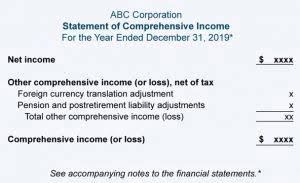
Retained earnings are affected by any increases or decreases in net income and dividends paid to shareholders. As a result, any items that drive net income higher or push it lower will ultimately affect retained earnings. Let’s look at this in more detail to see what affects the retained earnings account, assuming you’re creating a balance sheet for the current accounting period.
The funds may go into building a new plant, upgrading the current infrastructure, or hiring more staff to support the expansion. That said, calculating your retained earnings is a vital part of recognizing issues like that so you can rectify them. Remember to interpret retained earnings in the context of your business realities (i.e. seasonality), and you’ll be in good shape to improve earnings and grow your business. That means Malia has $105,000 in retained earnings to date—money Malia can use toward opening additional locations. Now that we’re clear on what retained earnings are and why they’re important, let’s get into the math.
Would you prefer to work with a financial professional remotely or in-person?
If a company issued dividends one year, then cuts them next year to boost retained earnings, that could make it harder to attract investors. Increasing dividends, at the expense of retained earnings, could help bring in new investors. However, investors also want to see a financially stable company that can grow, and the effective use of retained earnings can show investors that the company is expanding.
Knowing financial amounts only means something when you know what they should be. This reduction happens because dividends are considered a distribution of profits that no longer remain with the company. It can go by other names, such as earned surplus, but whatever you call it, understanding retained earnings is crucial to running a successful business. The steps to calculate retained earnings in the current period are as follows.
Subtract dividends
It is calculated by subtracting all the costs of doing business from a company’s revenue. Those costs may include COGS and operating expenses such as mortgage payments, rent, utilities, payroll, and general costs. Other costs deducted from revenue to arrive at net income can include investment losses, debt interest payments, and taxes. The statement of retained earnings provides an overview of the changes in a company’s retained earnings during a specific accounting cycle. The closing balance for that accounting cycle forms the opening balance for the next accounting period of the company.
Prolonged periods of declining sales, increased expenses, or unsuccessful business ventures can lead to negative retained earnings. In the final step of building the roll-forward schedule, the issuance of dividends to equity shareholders is subtracted to arrive at the current period’s retained earnings balance (i.e., the end of the period). The formula to calculate retained earnings starts by adding the prior period’s balance to the current period’s net income minus dividends. If the company has been operating for a handful of years, an accumulated deficit could signal a need for financial assistance. For established companies, issues with retained earnings should send up a major red flag for any analysts.
What Is the Difference Between Retained Earnings and Dividends?
Send invoices, get paid, track expenses, pay your team, and balance your books with our free financial management software. Profits generally refer to the money a company earns after subtracting all costs and expenses from its total revenues. Retained earnings are also known as accumulated earnings, earned surplus, undistributed profits, or retained income. Your retained earnings account on January 1, 2020 will read $0, because you have no earnings to retain. But while the first scenario is a cause for concern, a negative balance could also result from an aggressive dividend payout, such as a dividend recapitalization in a leveraged buyout (LBO). If the retained earnings balance is gradually accumulating in size, this demonstrates a track record of profitability (and a more optimistic outlook).
